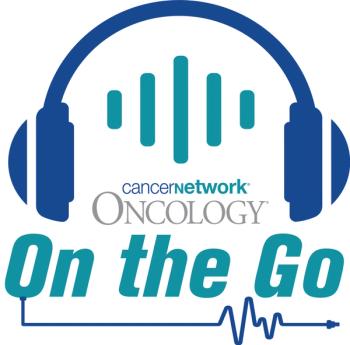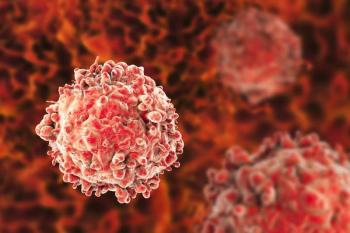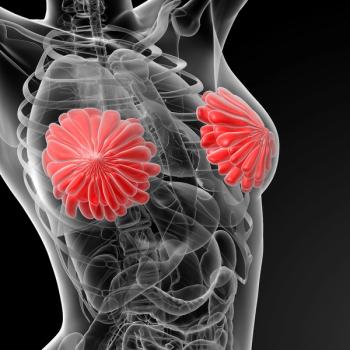
TIL Therapy Provides Excitement Despite Room to Grow in Melanoma Care
At 4 years, about 20% of patients with advanced melanoma who received tumor-infiltrating lymphocyte therapy were alive and responding to treatment.
At the 2025 National Immune Cell Effector Therapy (ICE-T) Symposium, Muhammad Umair Mushtaq, MD, presented on the current state of tumor-infiltrating lymphocyte (TIL) therapy in metastatic melanoma.1
The presentation made note of several unmet needs in melanoma, including more than half of patients with advanced melanoma having a primary resistance to immune checkpoint inhibitors (ICIs), one-third of patients who have responses to ICIs experiencing disease progression, and only 22% of patients with BRAF-mutant disease remaining progression-free 3 years after a BRAF inhibitor.
Mushtaq, an assistant professor of hematologic malignancies and cellular therapeutics at the University of Kansas Medical Center, spoke with CancerNetwork® and highlighted lifileucel (Amtagvi), an autologous TIL cell therapy, which was approved by the FDA in 2024 for the treatment of patients with pretreated advanced melanoma.2
There was a lot of excitement despite the margin of improvement remaining, according to Mushtaq.
CancerNetwork: What is the background of your presentation from the national ICE-T conference?
Mushtaq: TIL therapy in melanoma is the only FDA-approved cell therapy in solid cancers. There are several products approved for blood cancers, but this is an exciting time to see this development in the solid organ space. In melanoma, the TIL therapy [involves] these T cells that are already in the cancer. The patient’s tumor is receptive [to treatment], it’s digested, and those immune cells are separated. They are expanded and grown in the laboratory, and then once these cells are ready, in about 3 to 4 weeks, the patient receives a chemotherapy regimen with fludarabine and cyclophosphamide to knock down their immune system, so they don’t reject [the TIL] cells. Then they are admitted to the hospital. They receive [the TILs] along with interleukin-2 to stimulate the immune system to help these cells grow. Then they’re in the hospital for 1 to 2 weeks until they recover their blood counts, and then they’re discharged. They follow up with their medical oncologist.
We are seeing that, in those patients who have relapsed/refractory melanoma with survival measured as a few weeks and no effective treatments, about a third of these patients will have a response. The exciting part is that at the 4-year mark—the longest survival we have available—about 20% of these patients are still maintaining their response and are alive. There is margin to improve on these treatments, but this is a real hope for melanoma patients.
Are you able to expand upon the 4-year efficacy data?
A third of patients will have a response, and of the patients who have a response, half of them were alive at the 4-year follow-up. There is margin to improve on that, but it’s exciting. It’s a treatment for those patients who don’t have any other effective treatments available. One key point is that we will get to know more as these treatments are being delivered in the real world and will have more experience in the coming years. It’s important to refer these patients early on, and we are seeing that these patients see a center that can deliver cell therapies once they have progressed, and there aren’t any effective bridging treatments available. Sending these patients early to explore these treatments and then having clinical trials looking at these treatments in earlier lines of treatment would be the way forward.
What are the next steps toward optimizing cellular therapies in melanoma?
The next step in melanoma and other cancer types, such as lung cancer, would be making these treatments part of the first line to capture more patients who would be able to get these treatments and don’t become sick with disease progression. Giving these earlier, when the disease burden is low and…the disease evolution is also low, it may be more effective in earlier stages rather than later lines of treatment. Other [steps] would be [exploring] combinations, like combining these immune treatments, like cellular treatments, with T-cell engagers or other immunotherapies….Also, engineering these cells would be explored. Right now, we have these cells only expanded, but making CAR T cells or other types of engineered cell therapies would also be considered in the future.
What were some of the key takeaways from the solid cancer panel discussion held at the conference?
We learned about the challenges in delivering these treatments in solid organ cancers. For example, coordinating the transplant with the hematology team, and then the solid organ oncologist, the surgeons, and other parts of the team involved in patient care, and how to make that happen seamlessly or effectively. There were ideas around that. Challenges in cell therapies include the heterogeneity of the antigen, both finding something specific to malignant cells, but also finding something that is universally expressed, because even within intratumor antigen heterogeneity, the tumor microenvironment is hostile. There are challenges with these cells getting into the stroma, so there is 1 challenge. Other challenges, [such as] immunosuppressive microenvironment, myelin tribe suppressor cells, and other actors in the tumor microenvironment, are that these cells can get in there, but they would not be activated. They would be suppressed. There’s a lot of work to be done to make these therapies better, but we’re just witnessing the start of that era.
What do you want others to take away from your presentation?
It is an exciting time for immunotherapies in multiple cancers. There is real hope that we will be able to improve the outcomes of these deadly cancers and maybe cure some patients, even if it is a small fraction of patients. We are seeing the same things that we saw 100 years ago, when we had these different chemotherapy combinations….We are seeing those same things happening in the immunotherapy world. We will see different combinations of immunotherapies and different ways of activating the immune system. It’s important to send the patient to an NCCN [National Comprehensive Cancer Network] center or your regional referral center. If you’re a community oncologist, or if you’re a cancer patient in a community, it will be important to get an opinion at an NCCN or a regional, bigger cancer center to learn about the clinical trials and how they can help their care by working with their cancer doctor.
References
- Mushtaq MU. Tumor-infiltrating lymphocytes (TIL) therapy in metastatic melanoma. Presented at: 2025 ICE-T Symposium; July 26, 2025; Orlando, FL.
- FDA grants accelerated approval to lifileucel for unresectable or metastatic melanoma. FDA. February 16, 2024. Accessed July 31, 2025. https://tinyurl.com/44p5xrpf
Newsletter
Stay up to date on recent advances in the multidisciplinary approach to cancer.
































































































